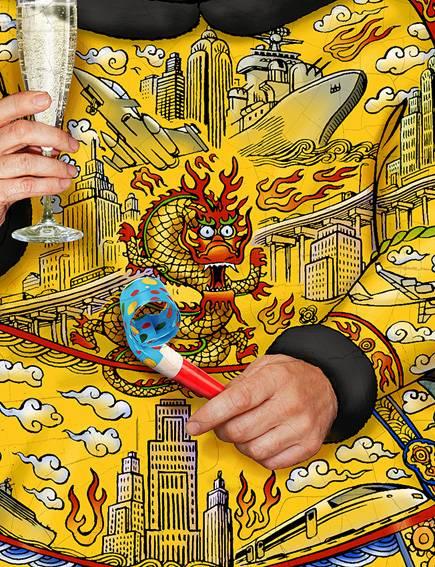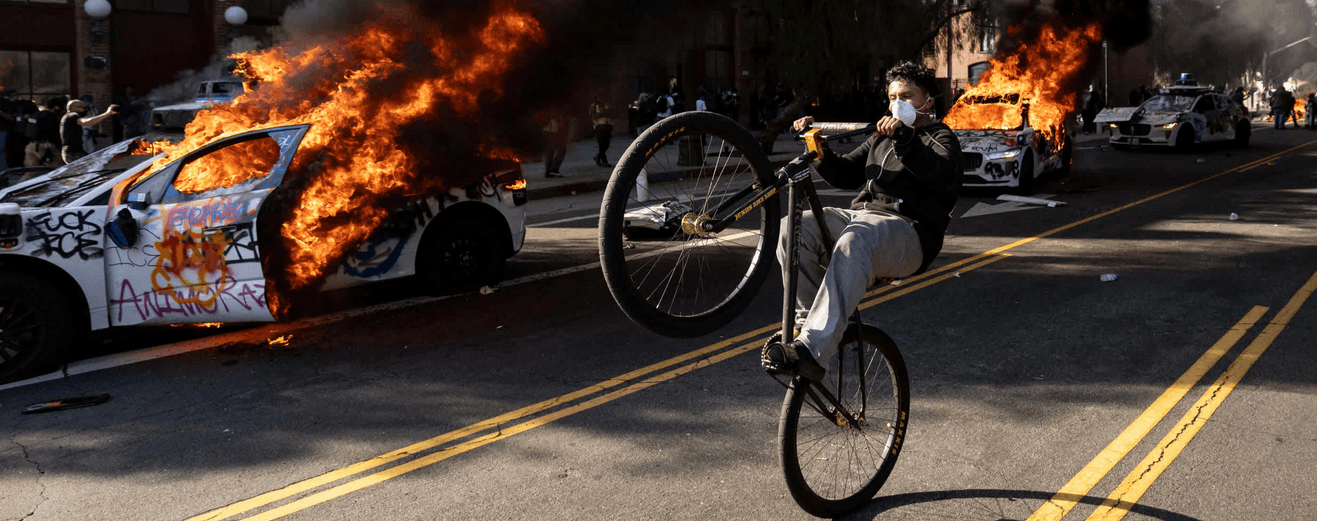
China Crash: The Faltering of Economic Transition

In days of panic selling and bursting bubbles, the Chinese stock markets appear to be a casino of roulette bets on future economic trends. Beyond the daily ups and downs of the stocks game, we can identify maneuvers of the ruling Chinese Communist Party (CCP) and other players, as well as long-term trends of Chinese capitalist development.1
What started all the fuss? Chinese share prices have been volatile for years, but started to rise especially fast in November 2014 – also in comparison to those in other countries.2 All in all they increased by more than 100 percent in six months before the market collapsed on June 12, 2015. The government started buying large amounts of shares, canceled new stock market launches, ordered state-owned enterprises (SOEs) not to sell shares and used other measures to stop the free fall of share prices. Only when half of the shares had officially been taken off the market and many of the remaining had been bought by state agencies did the fall slow somewhat. It continued, though, with more short periods of panic around July 27 and August 24, then leaving the index 40 percent lower than on June 12.3
These events happened in a financial sector framework that has stayed more protected and state-controlled than those in other capitalist countries throughout China’s “reform” period – i.e. from the late 1970s until today. Stock exchanges were set up in Shanghai and Shenzhen only in 1990 and 1991, in part to support the restructuring of SOEs. However, they played a minor role until the early 2000s, when the government made more efforts to further commercialize the financial sector to make it more suitable for capitalist expansion. A first large stock market bubble popped in early 2007, when shares went down after rumors that the government would raise the benchmark interest rates and go after credit-financed speculation.4 After 2007, the financial sector was further extended in the course of government policies to cushion the effects of the global economic crisis – i.e. a huge government stimulus program based on credit generated through the state-controlled banking sector.5 The effects of the crisis also led to the expansion of a “shadow” banking sector, which is largely outside the control of the government but plays an important role in financing private business and local governments’ development projects.6
Debts and Slowdown
In the years since 2008, the government stimulus programs continued, largely directed at construction and infrastructure. Subsequently, total debt rose from 158 percent of GDP in 2007 to 282 percent in 2014, including highly indebted local governments and SOEs – and this debt is hampering economic development and growth.7 In order to generate sufficient funds – necessary to ensure further economic growth and prevent social discontent as well as political instability – the government intends to further “liberalize” the financial sector. In late 2013, it launched new measures, e.g. the creation of a new free trade zone in Shanghai, efforts to internationalize the currency renminbi, and a further deregulation of the stock exchanges in Shanghai and Shenzhen.8
Meanwhile, signs of an economic slowdown are mounting. After two decades of GDP growth rates averaging about 10 percent per year, the growth has slowed down to below 8 percent since 2012, hovering between 6 and 7 this year.9 The government has already acknowledged the economic deceleration and officially defined the situation as the “new normal” (xin changtai) in 2014. The term reflects the intended change of the development model away from a fast growing export economy to a more balanced one, but it also shows the government’s attempt to appease economic actors who fear the effects of the transition.10 However, the symptoms of the slowdown are numerous and more extreme than anticipated, and the government finds it hard to control the effects. Domestic consumption has stayed chronically low (despite rising wages), as has private investment. Rising wages have added to rising unit labor costs – meaning some sectors in China lost competitive strength.11 As a result, some industrial capacities have been relocated to inland provinces with lower wages, some labor-intensive industries even to other countries.12 In addition, industrial profits have declined,13 while several sectors suffer from over-capacities due to recent large – often state-subsidized and “wasted” – investments.14 Recently, exports have stagnated or even declined.15
Infusions and Bubbles
In order to avoid further debts and their effects on growth and economic development in general, the CCP government needs new funds. The huge reserves of foreign currencies – result of the trade surpluses – cannot be used to the same extent anymore because the trade surplus is volatile and the reserves have already decreased.16 The middle classes’ immense savings17 could provide a remedy if they could be used for financial infusions, e.g. for indebted SOEs and deficient state-run pension and health insurance funds.18 Channeling part of those savings into the stock market could help transform debts into forms of equity, thereby passing the economic risk on to private investors.
Against this background, several events led to the recent overheating of the stock market: First, the government relaxed restrictions on the purchase of shares with borrowed money (margin trading) in 2014. Second, larger amounts of “cheap” money became available after China’s central bank lowered the benchmark rates on November 21, 2014.19 Third, real estate has been a major factor in the generation of economic growth in the past decade, but real estate prices have been stagnating or dropping since 2012 – the release of pressure from the real estate bubble that started in the mid-2000s.20 As a result, in 2014 larger parts of the middle class were prepared to invest in shares instead of real estate, hoping to increase their savings. Fourth, in fall 2014 the government started a media campaign encouraging private investment in the stock exchange, so that new private investors trusted the government, its willingness to support the rise of shares’ value, and its ability to control the market. Tens of millions of new stock portfolios have been opened since, and many shares were even bought with borrowed money in expectation of rising share values and large profits.
In this way, the earlier housing bubble was replaced by a stock bubble. The first signs of problems and a possible slump in share values appeared in spring 2015, and even the Chinese media talked about a “bubble” (paomo) for months. But it was not until mid-June – after government steps to restrict margin lending had been announced, shares had collapsed, and the first interventions to “rescue the market” (jiushi) had failed – that trust became angst and angst became panic, so that many investors started selling for ever lower prices.
Turning point
The stock market crash happens at a time when the Chinese development model has reached a turning point, and the financial turmoil reflects underlying structural problems of the economy, as well as social changes and tensions in the society as a whole. Since the early 1990s, China has become the second largest economy in the world and the engine of global growth, today representing 15 percent of global GDP.21 First, that boom was, however, driven by exports of consumer goods produced by “cheap” migrant labor, and the foundations of that model have been crumbling for some time. While exports, i.e. income generated by selling goods to economic players in other countries, are still an important factor, they are not the main economic driving force anymore. Since the crisis after 2007 and the stimulus programs, that role was taken by investments in infrastructure and real estate – based on credit and leading to the aforementioned rapid increase of debts.
Second, the social composition behind the boom is also changing. The most dynamic sectors of the Chinese economy – manufacturing, construction and services – are still resting on the labor of roughly 280 million migrant workers, but the mechanism of “cheap” migrant labor filling vacant (urban) jobs and then returning to the countryside in times of crisis and unemployment – as occurred in 1997–1998 and 2008–2009 – is partly jammed since many migrants have already permanently settled in cities. Meanwhile, fewer people leave the countryside because China has reached the so-called Lewis turning point, i.e. the surplus of rural labor – the source of migration – is coming to an end.22 This has led to an increase in the regional labor shortages that started to appear about ten years ago.
Third, the second and third generations of migrant workers are voicing their demands for better living conditions, have more experience in organizing and struggle, and have managed to make use of the labor shortages. The result has been a sharp increase of migrant workers’ struggles since the mid-2000s, leading to steady wage rises.23 While the cheap labor model has not disappeared, it is surely under pressure “from below” by migrant workers with increased power.
Fourth, meanwhile, the CCP government wants to stabilize its regime and, therefore, has to ensure further growth. To prevent an increase in workers’ protests it is prepared to make material concessions.24 It has been actively promoting the transformation from an economy based mainly on cheap labor, contract manufacturing and exports to one driven by high value-added (high-tech) production (upgrading) and a large domestic market lowering the dependency on exports (rebalancing).25 The slowdown as a result of this transformation was expected and stands behind the recently announced “new normal” policies, but efforts in this direction go back to the 2000s, were intensified in the 12th Five Year Plan (2010–2015), and will probably be the theme of the 13th (2016–2020) that the CCP is working on now. However, this is an ongoing process with an open end – largely depending on global challenges and crises, social struggles in China, and government attempts to manage these.26
Economic Effects
Obvious economic problems in China connected to this “rebalancing” and the global crisis notwithstanding, we have to wait and see to what extent the stock market crash itself will affect China’s position in the global economy and the “upgrading” process. Despite the crash and slowdown, the Chinese economy does not seem to be on the verge of collapse. Signs of economic weakness can be seen in various sectors – e.g. deflation as a result of overproduction –, and a “hard landing” is still possible, but so far most economic indicators show a slow and continuous decrease rather than a free fall.27 The Chinese financial markets and the renminbi are still protected, and that gives the CCP government more control in the face of crisis compared to other countries. Moreover, the Chinese stock market and the percentage of savings invested in shares are fairly small compared to those of the USA or Europe, so financial losses and the effects on the so-called real economy might be more limited than the panic reports on the crash suppose.28
However, the crash affects the function of the financial markets in China. Chinese companies as well as local government projects are still financed through (state-controlled) banks – i.e. debts – rather than the stock exchange. For the moment, the attempt to channel household savings into the stock market and use them to replace debts with equities has failed. The Chinese stock exchanges became a kind of “zombie” stock market because the government pumped in money to keep it alive, yet they have died nevertheless, i.e. largely stopped functioning as markets. As a result, many foreign investors have withdrawn capital – not just in connection with the stock market crash.29 It is not clear how the CCP government can regain the trust of domestic and foreign investors who want to speculate on market-driven stock exchanges. That might lead to aggravated problems of generating funds for SOEs or social funds, and of managing the increased debt in general.
Power and Legitimacy
Meanwhile, the political impact might be large. Reports suggest that the stock market crash weakened the position of certain “reformers” in the CCP who support more marketization, while the position of “conservatives” who defend a stronger role of the state and of SOEs might be strengthened. Other observers see a factional battle for influence and power within the current regime between the so-called “princelings” behind president Xi Jinping, who favors structural reforms towards the “new normal,” and the “populists” around prime minister Li Keqiang, who allegedly stood behind the stock market rally as a mechanism for stimulating growth after the real estate bubble had popped.30 However, the CCP leadership as a whole is opposed neither to further liberalization nor to structural reforms – if necessary just at a lower speed –, and rivals and troublemakers inside the CCP risk being swept away through the recently intensified anti-corruption-campaign.31
More striking is the effect of the crash and the CCP response on one of the pillars of CCP rule. Most of the new private investors are from the middle class – professionals, state employees or businesspeople who invested the money they had saved for their children’s education, for buying housing, or as retirement savings. This middle class has benefited from two decades of boom and, therefore, has generally supported the CCP since the 1990s. Now the CCP might lose legitimacy with the rising doubts in its ability to control the economy or, more precisely, in its ability to create opportunities for the middle class to further accumulate wealth. In addition, part of the middle class had already been disturbed by the aforementioned anti-corruption campaign, which has interfered with business transactions and paralyzed government officials because of their fear of getting purged. Both – the effects of the stock market crash and of the anti-corruption campaign, as well as the obvious abyss of corruption and official dilettantism illustrated by the explosion of dangerous chemicals in the port of Tianjin on August 12, 2015 32 – might weaken the position of the CCP and its ability to enforce social peace in the face of rising discontent.
Endnotes
1 This article started as an interview with the Italian website http://www.infoaut.org in early September 2015: .
2http://www.zerohedge.com/sites/default/files/images/user3303/imageroot/2015/07/20150708_chinavol1.jpg
3 Despite the slump, in early September the Chinese stock market index was still considerable higher than at the end of August 2014 (roughly 40 percent). For the development of the Shanghai Shenzhen CSI 300 Index see http://www.bloomberg.com/quote/SHSZ300:IND; observers see the development as an overdue “correction”: http://www.ft.com/cms/s/3/b6b826c8-1c08-11e5-a130-2e7db721f996.html
4http://www.nytimes.com/2008/04/02/business/worldbusiness/02yuan.html?pagewanted=all&_r=0; http://news.xinhuanet.com/english/2007-02/27/content_5780066.htm
5http://www.nytimes.com/2008/11/10/world/asia/10china.html; http://www.washingtonpost.com/wp-dyn/content/article/2008/11/09/AR2008110900701.html
6 On the “shadow” banks see http://www.peri.umass.edu/fileadmin/pdf/working_papers/working_papers_351-400/WP375.pdf. The local governments – unable to take out direct loans – have formed companies called “Local Government Financing Vehicles” (LGFV) to be able to borrow money and increasingly used the shadow banking sector: http://www.ibtimes.com/chinas-local-government-financing-vehicles-lgfv-7-things-you-should-know-about-chinas-local-debt; the shadow banking system accounts for 30 percent of all new credits since 2007: http://www.mckinseychina.com/putting-chinas-debt-into-perspective
7 “China has become indebted before it has become rich”: http://www.ft.com/intl/cms/s/0/895604ac-10d8-11e4-812b-00144feabdc0.html; http://www.washingtonpost.com/news/wonkblog/wp/2015/03/05/is-chinas-1929-moment-coming; http://www.economist.com/blogs/freeexchange/2014/07/china-s-debt-gdp-level
8www.bloombergbriefs.com/content/uploads/sites/2/2014/09/EN-China_Financial_Data.pdf
9 In official numbers; some estimations are even lower; see, for instance, http://www.zerohedge.com/news/2015-08-26/china-stunner-real-gdp-now-negative-11-evercore-isi-calculates
10 On the “new normal” see http://news.xinhuanet.com/english/china/2014-11/09/c_133776839.htm; http://en.people.cn/n/2014/1110/c90883-8807112.html
11 For instance, parts of the garment sector. On the development of wages see http://blogs.wsj.com/chinarealtime/2013/05/23/seeking-help-for-chinas-labor-market
12http://www.chinadaily.com.cn/business/2010-07/06/content_10069557.htm; http://www.washingtonpost.com/news/wonkblog/wp/2013/07/12/this-is-why-the-textile-industry-is-relocating-to-places-like-bangladesh
13http://www.bloomberg.com/news/articles/2015-01-27/china-s-industrial-profits-fall-most-since-2011-as-economy-slows; http://uk.reuters.com/article/2015/07/27/uk-china-economy-profits-idUKKCN0Q102M20150727
14 On “wasted” investments, i.e. misallocation of capital, see http://www.ft.com/intl/cms/s/0/002a1978-7629-11e4-9761-00144feabdc0.html; http://www.scmp.com/news/china/economy/article/1842793/solution-chinas-industrial-overcapacity-setting-more-factories
15 In order to boost exports, the Chinese government started devaluing its currency on August 11, 2015: http://www.theguardian.com/business/2015/aug/11/china-devalues-yuan-against-us-dollar-explainer; http://www.nytimes.com/2015/08/11/business/international/china-lowers-value-of-its-currency-as-economic-slowdown-raises-concerns.html?_r=0. The analogies to the development in Japan in the 1980s and after are striking: stimulus, debts, overcapacities, deflation, stagnation: http://www.ft.com/cms/s/0/8d5eb8ae-5241-11e5-b029-b9d50a74fd14.html
16http://www.ft.com/cms/s/0/baee0b5c-b1b1-11e4-8396-00144feab7de.html
17 The savings rate in China is the highest in the world (above 50 percent); the global average is 20 percent; see, for instance, http://en.people.cn/90778/8040481.html
18 In addition, the government has tried to release the financial pressure on local governments by a debt-to-bond swap scheme: http://www.reuters.com/article/2015/05/21/us-china-debt-swap-idUSKBN0O60P22015052; http://www.bloomberg.com/news/articles/2015-07-14/china-said-to-consider-adding-1-trillion-yuan-debt-swap-quotas
19 For the first time since 2012 – and it has lowered it several times since: http://www.bloomberg.com/news/articles/2015-06-27/china-cuts-interest-rates-reserve-ratio-in-bid-to-stem-slowdown; http://www.nytimes.com/2015/08/26/business/international/china-interest-rates-stock-market-distress.html?_r=0
20 The housing bubble is linked to the stimulation of growth by local governments which appropriated rural land for low prices from farmers and sold it to property developers who built clusters of tower blocks. After the housing prices had multiplied in China since the mid-2000s (so that even the urban middle class had problems financing property), the government started measures to cool down the market in 2011. Prices have been stagnant or falling since: http://www.businessinsider.com/real-estate-crash-in-china-2012-5?IR=T. Another reason for the cooling down of the property market is the demographic change: http://www.ft.com/cms/s/0/ca218cbc-7c63-11e4-9a86-00144feabdc0.html
21 On China’s economic performance see http://blogs.ft.com/ftdata/2014/10/08/chinas-leap-forward-overtaking-the-us-as-worlds-biggest-economy
22 While, officially, still 48 percent of population live in the countryside, observers estimate that only 20 percent of the labor force still work in agriculture – most of them middle aged or older. In addition, the whole population is aging, an effect of the One Child Policy started in the early 1980s, and every year fewer people enter the labor market: http://www.ft.com/intl/cms/s/2/767495a0-e99b-11e4-b863-00144feab7de.html; http://www.clb.org.hk/en/content/tide-turns-sichuan-rural-labourers-find-opportunities-closer-home
23 On these struggles see http://www.gongchao.org/en/texts/2014/new-strikes-in-china. The Chinese government, aware of the pressure and need to control these struggles through a combination of repression and concessions, has raised the minimum wage by an average of more than 10 percent a year since 2009 and plans further increases: http://www.reuters.com/article/2014/04/01/us-china-salary-idUSBREA3004H20140401
24 It is important to note that the government has also reacted with increased repression directed at striking workers and their supporters, labor and environmental NGOs and feminist activists, in addition to the more well-known repression of “civil rights” lawyers.
25 On the problems of rebalancing see http://www.ft.com/intl/cms/s/0/f8ed7dd8-841d-11e3-b72e-00144feab7de.html. The Chinese economy has already changed: the service sector accounts for 48 percent of total economic output, manufacturing and construction 43, and agriculture a mere 9 percent (http://www.ft.com/cms/s/0/eab80bda-5508-11e5-8642-453585f2cfcd.html).
26 Here the analogy with Japan reaches a limit because, in China, workers’ expectation of further improvements and their determination to fight for them seem much bigger than they were in Japan in the 1990s.
27http://www.nytimes.com/2015/08/26/opinion/false-alarm-on-a-crisis-in-china.html, http://www.theguardian.com/commentisfree/2015/sep/14/chinese-economy-western-markets-china. Some reports see more signs of crisis and paint a picture that is far different from the one official government statements suggest: “the patient is sick” in http://ftalphaville.ft.com/2015/08/28/2138656/guest-post-trying-to-throw-our-arms-around-the-sick-chinese-economy; http://www.bloomberg.com/news/articles/2015-07-17/how-china-s-slowdown-is-worse-than-you-think. Other sources discuss a kind of “quantitative tightening” due to capital flight, and to the decrease in foreign reserves as a result of the currency devaluation, which in turn points to new problems: http://www.bloomberg.com/news/articles/2015-09-07/china-s-foreign-exchange-reserves-fall-in-august-on-yuan-support, http://www.ft.com/cms/s/0/a8c9b500-555a-11e5-a28b-50226830d644.html, http://www.ft.com/cms/s/0/baee0b5c-b1b1-11e4-8396-00144feab7de.html
28 In addition, the number of shareholder companies is fairly small, and a large part of the shares (85 percent) is held by about 90 million small (private) investors – most of whom started investing only in the past two years. This means that less than 10 percent of Chinese households hold a portfolio (vs. 55 percent in the US), and they invest a small portion of their money in shares (about 15 percent). http://uk.businessinsider.com/statistics-on-chinese-invested-in-stock-market-crash-2015-7, http://uk.businessinsider.com/chinese-households-invest-little-in-stocks-2015-7?op=1?r=US&IR=T, http://uk.businessinsider.com/most-chinese-investors-and-corporations-are-not-invested-in-stock-market-2015-7?r=US&IR=T#ixzz3fPbUftPM
29http://www.theguardian.com/world/2015/aug/19/chinas-flight-of-capital-causes-global-ripples; http://www.ft.com/cms/s/0/1b7ae16e-4ff7-11e5-8642-453585f2cfcd.html
30http://blogs.ft.com/beyond-brics/2015/07/27/chinas-collapsing-stock-market-underlines-need-for-new-normal-reforms
31 So far, not only have over a hundred cadres at the level of provincial governor or higher been punished, but also hundreds of thousands in lower ranks who are an important pillar of CCP rule: http://www.scmp.com/topics/xi-jinpings-anti-graft-campaign, http://www.ccdi.gov.cn/yw/201502/t20150212_51324.html
32 For an analysis of the explosion’s significance, see http://chuangcn.org/2015/08/tianjin-explosion
Ti è piaciuto questo articolo? Infoaut è un network indipendente che si basa sul lavoro volontario e militante di molte persone. Puoi darci una mano diffondendo i nostri articoli, approfondimenti e reportage ad un pubblico il più vasto possibile e supportarci iscrivendoti al nostro canale telegram, o seguendo le nostre pagine social di facebook, instagram e youtube.


















